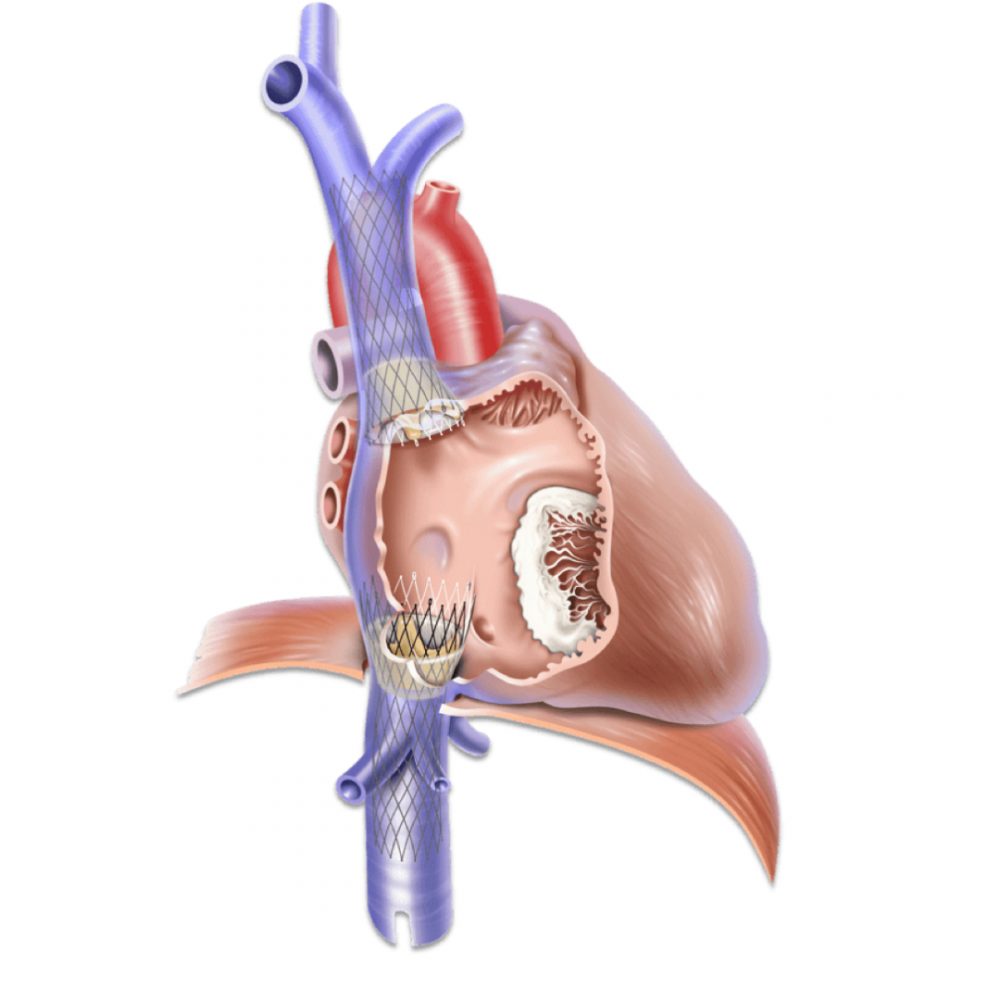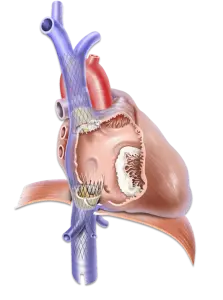
The tricuspid valve is a valve located between the right upper and right lower chambers of the heart.
This valve controls the flow of blood in a single direction.
Tricuspid regurgitation occurs when the valve does not close well. In essence the valve cannot seal tightly enough resulting in a backflow of blood in the opposite direction. This results in a significant amount of blood volume re-entering the right atrium and raises the pressures in the chamber.
When this happens symptoms of congestion can occur.
| Primary | Secondary | |
| Valve leaflets | Valve leaflet damaged | Valve leaflet not damaged but valve cannot close due to enlargement of the heart and valves are pulled apart. |
| Examples | Infection – infective endocarditis Congenital heart defects Trauma from pacemakers wires Post radiation treatment Rheumatic fever Marfan syndrome Carcinoid syndrome (rare) | Associated with atrial fibrillation – an irregular heartbeat Pulmonary hypertension Left heart valve disease |
When the regurgitation is mild or moderate there is often no significant impact. When the regurgitation becomes severe, the patients often experience significant congestion. They could experience the following:
This is done using a transthoracic echocardiogram. This is an ultrasound technique which allows visualization of the valve as well as to quantify the degree of regurgitation. Occasionally blood tests may be conducted to assess the impact of the tricuspid regurgitation on the body. These may include tests to assess the function of the liver as well as the kidneys as these organs may bear the brunt of the congestion.
Conventionally, these were only treated by open heart surgery through valve repair or valve replacement techniques. Patients may also require large amounts of diuretics ( medications to expel water via increasing urine excretion) to reduce congestion. There are now alternatives to these. These include percutaneous techniques to reduce the leakage of the valves by clipping the valve leaflets ( tightening the valves) or by implanting stented valves to shield the body from the harmful effects of the tricuspid regurgitation. These techniques are especially useful when patients are deemed high risk for open surgery.


This is dependent on the type and degree of tricuspid valve regurgitation. Mortality increases with the increased severity of tricuspid regurgitation. One large study reported a survival rate of 64%1. A more contemporary study showed a survival rate of 78.2% over a mean follow-up of over 1000 days2.
Procedures
Procedures
Procedures
Procedures
Procedures
Procedures
Procedures
Procedures
Procedures
Procedures
Dr Pipin Kojodjojo specializes in cardiac electrophysiology and management of heart rhythm disorders in both adolescents and adults.
Experienced in managing patients with atrial fibrillation and unexplained blackouts (syncope).
Dr Chuang Hsuan-Hung is a heart failure intensivist trained in advanced cardiovascular imaging. He specialises in heart failure and heart transplant intensive care.
Experienced in managing genetic heart disease, cardio-oncology and sports cardiology.
Dr Stanley Chia is an interventional cardiologist with a distinguished academic record.
He is skilled and experienced in managing complex cardiovascular disease and difficult coronary interventional procedures like stenting of the left main artery.
Dr Jeremy Chow is an electrophysiologist specialising in the implantation and management of electronic cardiac devices.
Experienced in arrhythmia management, stroke prevention and trained in procedures such as electrophysiology studies and ablations.
Dr Tan Chong Hiok is an interventional cardiolgist trained and specialises in stenting of the left main artery and chronic total occlusion.
He is experienced in managing complex cases in patients who have declined or are unsuitable for bypass surgery.
Dr Goh Ping Ping is an echocardiologist trained in imaging of the heart.
She is a strong advocate of preventive cardiology and awareness for women’s heart health. She manages a broad spectrum of cardiovascular disease including heart attack patients.
Dr Chan Wan Xian is a heart failure intensivist specialised in managing complex heart failure and patients with mechanical hearts.
Trained in cardiac imaging and she is experienced is treating women at risk of heart disease, especially during pregnancy.
Dr Edgar Tay is an interventional cardiologist specialised in structual heart disease, adult congenital and pulmonary hypertension.
Trained in procedures like TAVI, Mitralclip and pulmonary angioplasty for chronic thromboembolic pulmonary hypertension.
Dr Cliff Wong is an echocardiologist trained in imaging of the heart.
He specializes in cardiac imaging (echocardiography and cardiovascular computed tomography). Experienced in managing cardiomyopathy, heart failure, valvular heart diseases and cardio-oncology.